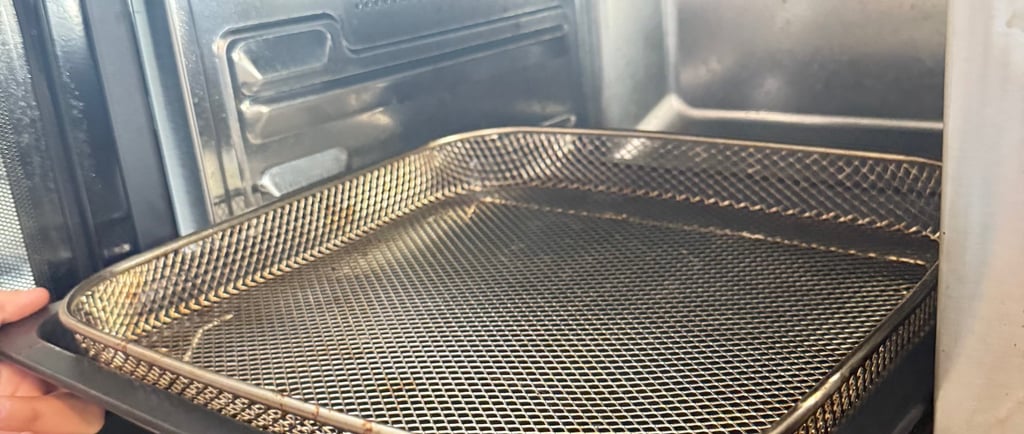To air fry or not to air fry
Should you jump on the Airfryer bandwagon?
5/8/20243 min read


The Rise of the Airfryer
Airfryers were first introduced in 2010 by Philips, but boomed in popularity in the early 2020's. They are now a part of many households range of cooking devices. For some they are an essential part of their kitchen (1 in 5 of us use them as their go-to cooking device), but for many they are a gadget that takes up a large amount of worktop or cupboard space collecting dust.
It was the Covid pandemic that drove their popularity. More people were cooking from home, being locked indoors made more people health conscious, they are more efficient that conventional ovens and there was some very clever marketing at the time. They were marketed as healthier, more convenient, versatile, energy efficient, easier to clean and cheaper to use than using a conventional oven or deep fat frying. This led to more than a third of households in the UK owning one.
Pros and cons
Given the popularity, it's not surprising that there are many positives for owning and using an Airfryer. It is widely acknowledged that they are;
Healthier - compared to deep or shallow frying they use a fraction of the oil
Convenient - as a result of their size and the way the air flows, they heat up more quickly than conventional ovens and can cook certain things more quickly. Think of it as a fan oven on steroids.
Cheaper - whilst energy efficiency varies across different model, generally as you are heating a small space than a conventional oven they use less energy making a positive impact on your electric bills. Also, as you are using less oil, there will be savings on oil usage.
Versatility - much of what you can do in a conventional oven or deep fat fryer you can do in an Airfryer. You can usually roast, fry, bake and grill in most models these days.
However, are they for everyone? When considering whether to buy an Airfryer, you should consider some of the limitations;
Size - they are bulky pieces of kit and take up quite a bit of worktop or cupboard space.
Price - most Airfryers aren't cheap and some can be upwards of £200.
Cooking capacity - whilst you can do much of what you'd normally do in a conventional oven, the capacity of Airfryers mean that cooking a family meal in one can be limiting.
Learning curve - It is not as simple as copying cooking times from the oven, grill or fryer. You need to experiment with timings and temperatures to get good results.
Should you buy one?
The million dollar questions. The answer of course is it depends.
We bought one a few months ago when our microwave died. A combination microwave/arifryer wasn't much more than a good microwave and it takes up roughly the same amount of space, so that answered a couple of the downsides of getting one. Do we use it? Yes! Potato wedges, chicken in breadcrumbs, meatballs have all been through the Airfryer. Results have varied, so yes we are still on that learning curve. Has it changed our lives? Sadly not.
The capacity has been an issue for a family of hungry people. Cooking breadcrumbed chicken breasts (for our lovely Chicken Katsu curry) has had to be done in batches. Even chips, we struggle to get enough spread on the basket to feed all of us.
There are of course the benefits, it is certainly easy to use and it does make it feel like things are healthier. The food does come out tasting very little different to the oven or grilled food, and in some cases it's crispier and less oily.
So in conclusion, if you can afford a good one (do your homework on brands and models), have space in your kitchen and aren't cooking for a tribe of ravenous children, then it is a worthy investment. If not, stick with your oven, grill and frying pan.